NAVYPEDIA
 Support the project with paypal
Support the project with paypal
Ships
| Name | No | Yard No | Builder | Laid down | Launched | Comp | Fate |
|---|---|---|---|---|---|---|---|
| Auckland (ex-Heron) | L61 - U61 | 1317 | Denny, Dumbarton | 6/1937 | 30.6.1938 | 11.1938 | sunk 24.6.1941 |
| Egret | L75 - U75 | 1835 | White, Cowes | 7/1937 | 31.5.1938 | 11.1938 | sunk 27.8.1943 |
| Pelican | L86 - U86, 1948- F86 | 1177 | Thornycroft, Woolston | 9/1937 | 12.9.1938 | 3.1939 | BU 11.1958 |
Technical data
| Max speed, kts, kn | 19.25 |
|---|---|
| Displacement standard, t | 1250 |
| Displacement full, t | 1790 |
| Length, m | 89.2 |
| Breadth, m | 11.4 |
| Draught, m | 3.40 |
| No of shafts | 2 |
| Machinery | 2 sets Parsons geared steam turbines, 2 Admiralty 3-drum boilers |
| Power, h. p. | 3600 |
| Fuel, t | oil 370 |
| Endurance, nm(kts) | 6200(15) |
| Armament | 4 x 2 - 102/45 QF Mk XVI, 2 x 1 - 47/40 3pdr Hotchkiss Mk I, 1 х 4 - 12.7/62, 2 DCT, 1 DCR (15) |
| Electronic equipment | type 127 sonar |
| Complement | 188 |
Standard scale images

Egret 1943
Project history
On half-knot more faster variant of Bittern class with additional fourth twin 102mm DP mount, designed for 1936 and 1937 Programmes.
Modernizations
autumn 1939, all: - 2 x 1 - 47/40; DC stowage increased up to 40
1941, Egret: + 1 x 1 - 40/39 QF Mk II, 1 x 4 - 12.7/62, type 285, type 286 radars
1941, Pelican: + 2 x 1 - 20/70 Oerlikon Mk II/IV, 1 x 4 - 12.7/62, type 286 radar
1942, Egret: - 1 x 1 - 40/39; + 2 x 1 - 20/70 Oerlikon Mk II/IV, type 271 radar
1942, Pelican: + 2 x 1 - 20/70 Oerlikon Mk II/IV
1943, Egret: - type 127 sonar; + 1 x 24 - 178 Hedgehog ASWRL, type 144 sonar
1943, Pelican: - type 286 radar; + type 271, type 291 radars
2/1944, Pelican: - 1 x 2 - 102/45, 1 x 4 - 12.7/62, type 127 sonar; + 1 x 4 - 40/39 2pdr QF Mk VIII, 1 x 24 - 178 Hedgehog ASWRL, 2 DCT, 1 DCR, DC stowage increased up to 120, type 144 sonar
1/1946, Pelican: 3 x 2 - 102/45 Mk XIX, 1 x 4 - 40/39 Mk VII, 4 x 1 - 20/70 Mk III, 1 x 24 - 178 Hedgehog ASWRL, 4 DCT, 2 DCR (120), type 271, type 291 radars, type 144 sonar
Naval service
Auckland was sunk by Italian bomber Ju 87 at Tobruk 24.6.1941. Egret was sunk by German Hs 293 gliding bomb from Do 217 bomber 27.8.1943. Pelican was laid up shortly after war.
Many thanks to Wolfgang Stöhr for additional information on this page.
 HOME
HOME FIGHTING SHIPS OF THE WORLD
FIGHTING SHIPS OF THE WORLD UNITED KINGDOM
UNITED KINGDOM ESCORTS
ESCORTS EGRET sloops (3, 1938 - 1939)
EGRET sloops (3, 1938 - 1939)
